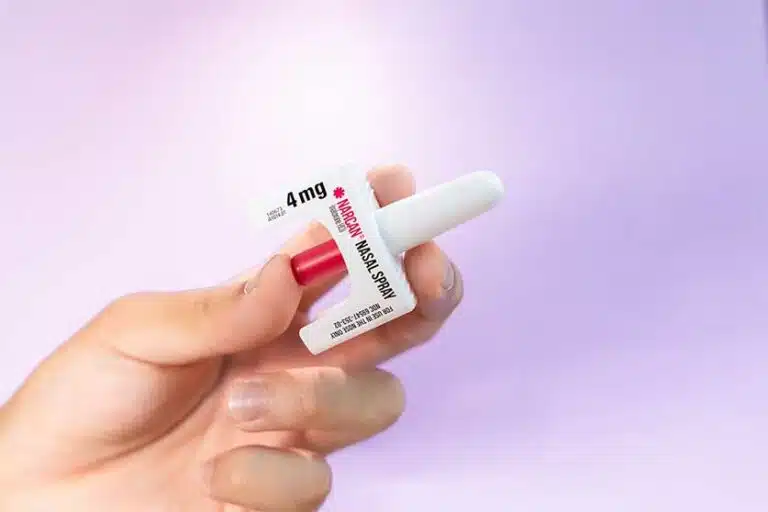Three Reasons Why Harm Reduction Will Inform U.S. Drug Policy
- What Is Harm Reduction?
- Failure Of Old Interventions
- Widespread Impact Of The Overdose Crisis
- Role Of Race & Class

When discussing solutions to the U.S. overdose crisis, many people champion a public health approach called harm reduction. For decades, U.S. legislators often opposed this approach because they feared it would encourage substance misuse.
As of 2023, however, more lawmakers than ever (both Democrats and Republicans) are embracing harm reduction.
What Is Harm Reduction?
Harm reduction is a movement that aims to reduce infectious diseases, overdoses, and other health risks among people who misuse drugs. It promotes the use of life-saving tools such as:
- syringe exchange programs, which provide free, sterile syringes to people who inject drugs
- naloxone (brand name Narcan), a medication that can quickly and safely reverse an opioid overdose by blocking the effects of opioids
- fentanyl test strips, small strips of paper that can detect the presence of fentanyl in other drugs
These tools can help people with addiction stay safe until they are ready or able to seek treatment. Although somewhat unpopular in the past, here are three reasons why harm reduction will inform U.S. drug policy moving forward.
1. The Failure Of Old Interventions
The concept of harm reduction first emerged in the 1980s when activists established syringe exchange programs to reduce the spread of HIV/AIDS among people who inject drugs.
Many politicians worried these programs would only enable substance misuse and addiction. They dismissed the idea of harm reduction and continued to treat people with addiction primarily as criminals, hoping the fear of imprisonment would encourage them to seek treatment for their diseases.
Criminalizing Addiction Doesn’t Work
Over time, though, studies have proven that criminalizing addiction causes much more harm than good.
In particular, it contributes to the stigma (judgment and discrimination) toward those with addiction. This stigma prevents numerous people from admitting they have an addiction and seeking treatment. When left untreated, addiction often leads to overdose.
Recently, the failure of criminalization has become impossible to ignore. In 2021, the annual number of U.S. overdose deaths topped 100,000 for the first time in history.
Rapid Rise Of Fentanyl-Related Overdoses
Most of the 2022 overdose deaths involved fentanyl, a synthetic opioid that’s up to 50 times stronger than heroin. It’s often secretly laced into other street drugs, including powder drugs like heroin and pills like Xanax.
The rapid rise in fentanyl-related overdoses has led many policymakers to finally consider harm reduction strategies, including fentanyl test strips. Three years ago, only 17 states had legalized the strips. They have since become legal (or soon-to-be legal) in at least 37 states.
2. The Widespread Impact Of The Overdose Crisis
Because the overdose crisis has taken so many lives, most lawmakers know at least one person affected by it.
Indeed, in 2020, about 44 people died every day from overdoses involving prescription opioids. When legislators experience this crisis up close, they become much more likely to search for solutions.
Personal Losses
Even legislators who have not been personally impacted by the crisis often hear from citizens who have. After losing a loved one to an overdose, these citizens demand more effective drug legislation, including increased harm reduction.
These demands have motivated many lawmakers to explore harm reduction, even if they had resisted it in the past.
For instance, some lawmakers long opposed the sale of over-the-counter Narcan. As with needle exchange programs, they feared that Narcan would encourage drug use.
Embracing Narcan
However, studies suggest that increasing access to Nrcan does not lead to higher rates of drug use or drug-related harm. That’s why the U.S. Food and Drug Administration (FDA) recently approved over-the-counter Narcan.
Once available by prescription only, the medication will soon be sold in pharmacies, retail stores, and even vending machines.
3. The Role Of Race & Class
In the past, drug crises hit marginalized groups the hardest.
For example, the 1980s crack epidemic primarily affected Black people, while the early 2000s meth epidemic primarily affected poor white people. The U.S. government responded to these epidemics by criminalizing the affected marginalized groups.
Both crises had little to no effect on wealthy white people, and the majority of policymakers are wealthy and white.
Although it’s unfortunate, policymakers tend to care most about issues that impact them directly. The opioid overdose crisis affects people of all races and classes. As a result, it caused many lawmakers to explore the benefits of harm reduction for the first time.
If you or someone you love struggles with substance abuse, please reach out to an Ark Behavioral Health specialist.
Our inpatient and outpatient treatment programs offer medical detox, behavioral therapy, and other evidence-based treatments to help you or your loved one thrive.
Written by Ark Behavioral Health Editorial Team
©2024 Ark National Holdings, LLC. | All Rights Reserved.
This page does not provide medical advice.
Centers for Disease Control and Prevention - Fentanyl Facts
Centers for Disease Control and Prevention - Prescription Opioid Overdose Death Maps
Journal of Health Care for the Poor and Underserved - Preventing Opiate Overdose Deaths: Examining Objections to Take-Home Naloxone/
National Institute on Drug Abuse - Punishing Drug Use Heightens the Stigma of Addiction
New York Times - America’s New Drug Policy
Questions About Treatment?
Ark Behavioral Health offers 100% confidential substance abuse assessment and treatment placement tailored to your individual needs. Achieve long-term recovery.
100% confidential. We respect your privacy.
Prefer Texting?
Our friendly support team is here to chat 24/7. Opt out any time.







 Learn More
Learn More








